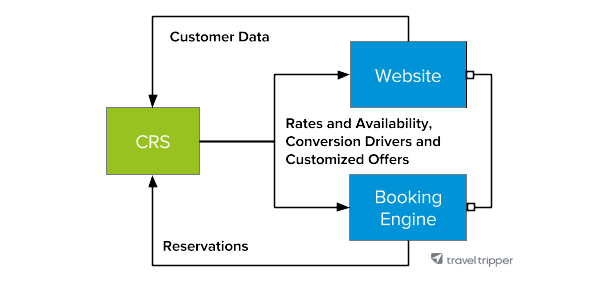Skift Take
Hotels need to start using the data they're collecting to make smart and personalized marketing decisions in order to stand out from the competition.
This sponsored content was created in collaboration with a Skift partner.
In recent years, personalization has become an increasingly talked-about strategy in hotel marketing. At a guest experience level, personalization (using guests’ preferences to enhance their stays) can make a huge difference in increasing ancillary spending and cultivating customer loyalty.
But when it comes to hotel booking, personalized marketing has much more to do with conversion. Personalization involves taking a traveler’s preferences and buying habits to deliver a curated selection of offers that will increase that traveler’s chance of booking.
Recently, the travel industry has talked about tapping into big data to deliver customer personalization. But “big data” is much easier to toss around as a sexy buzzword than it is to actually accomplish.
The industry faces two major challenges: 1) collecting and processing data in order to draw correlations and connections in consumer travel habits, and 2) identifying customers in real-time as they browse booking sites to deliver highly personalized pricing and special offers.
Making sense of big data
Data collection is relatively easy with the digital footprint left through various means (IP addresses, site cookies, social profiles, etc), the challenge is identifying exactly what data should be collected and analyzed.
At its most basic, data encompasses geographic and demographic information, such as location, gender, and age range. But what travel brands are really looking for is behavioral and social data.
Behavioral data specifically looks at user interactions, for example what sites a user visits, how often they visit, how long they spend on a particular page, and at what point they leave a site. Other important factors include the amount of times a particular flight or stay is researched, the price point at which a purchase is booked or abandoned, and completed calls to action such as signing up for a newsletter or clicking on an ad.
Social data (also called psychographic data) considers travelers’ social interactions and preferences: activities, hobbies, political leanings, etc. Social media has given brands the ability to tap into this type of data, but other sites also have a wealth of social information as well. For example, Netflix knows what you like to watch, while Ticketmaster knows the types of shows you attend. With natural language processing, brands can now even glean emotions and attitudes from reviews on sites like Yelp or TripAdvisor.
Data itself says very little—it’s the correlations between data sets that travel brands are most interested in. For example, if users visit at least five pages of a hotel site, are they more likely to opt for a paid room upgrade? Does the likelihood of booking a four-star hotel increase for users who book restaurants on OpenTable at least once per week? If you tend to write positive TripAdvisor reviews, are you more or less likely to book special packages?
By using these type of correlations, hotel brands can test out pricing and packaging models for varying segments of customers at a very granular level. The next step is actually applying these personalized pricing models.
Transforming big data into “small data” — developing the personalized offer
One of the obstacles to applying data-driven personalization is identifying individual web users in real-time. If you don’t know who is browsing the site, how can you make a personalized offer?
Hotel technology still lags behind in this regard. Central Reservation Systems (CRS) that hotels use to manage pricing can only customize pricing based on what the traveler inputs into the booking engine, such as dates and length of stay. But currently there exists no way to gain information from travelers who are merely browsing a website.
A new model for the CRS is needed that allows both the website and booking engine to return customer data to the CRS, with the CRS responding in real-time to send personalized offers as the customer is browsing.

One potential solution that some travel companies are exploring is tapping into social media profiles. By connecting Facebook or Google accounts, companies could tap into a wealth of social data that they could correlate with behavioral data. Booking.com and Expedia are already exploring this—both allow users to log into Facebook on the site.
In fact, Expedia has already invested billions in the development of personalized travel graphs, a definite sign that the company is taking personalization marketing seriously.
Of course, some travelers may balk at the idea—personalization toes a line of privacy that some may feel uncomfortable with. However, travelers will be more apt to sharing data if they know they can benefit greatly through deals unique to them. Hotels will have to maintain transparency and offer standard pricing alongside custom offers. As in all hospitality transactions, customer participation and open dialogue are key.
This content was created collaboratively with our sponsor Travel Tripper.
Have a confidential tip for Skift? Get in touch
Tags: big data, hotels, personalization

